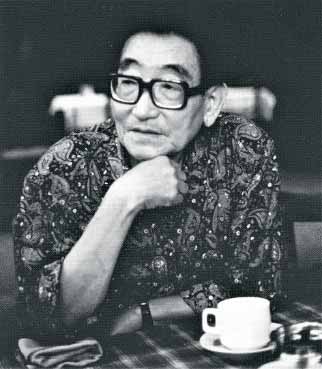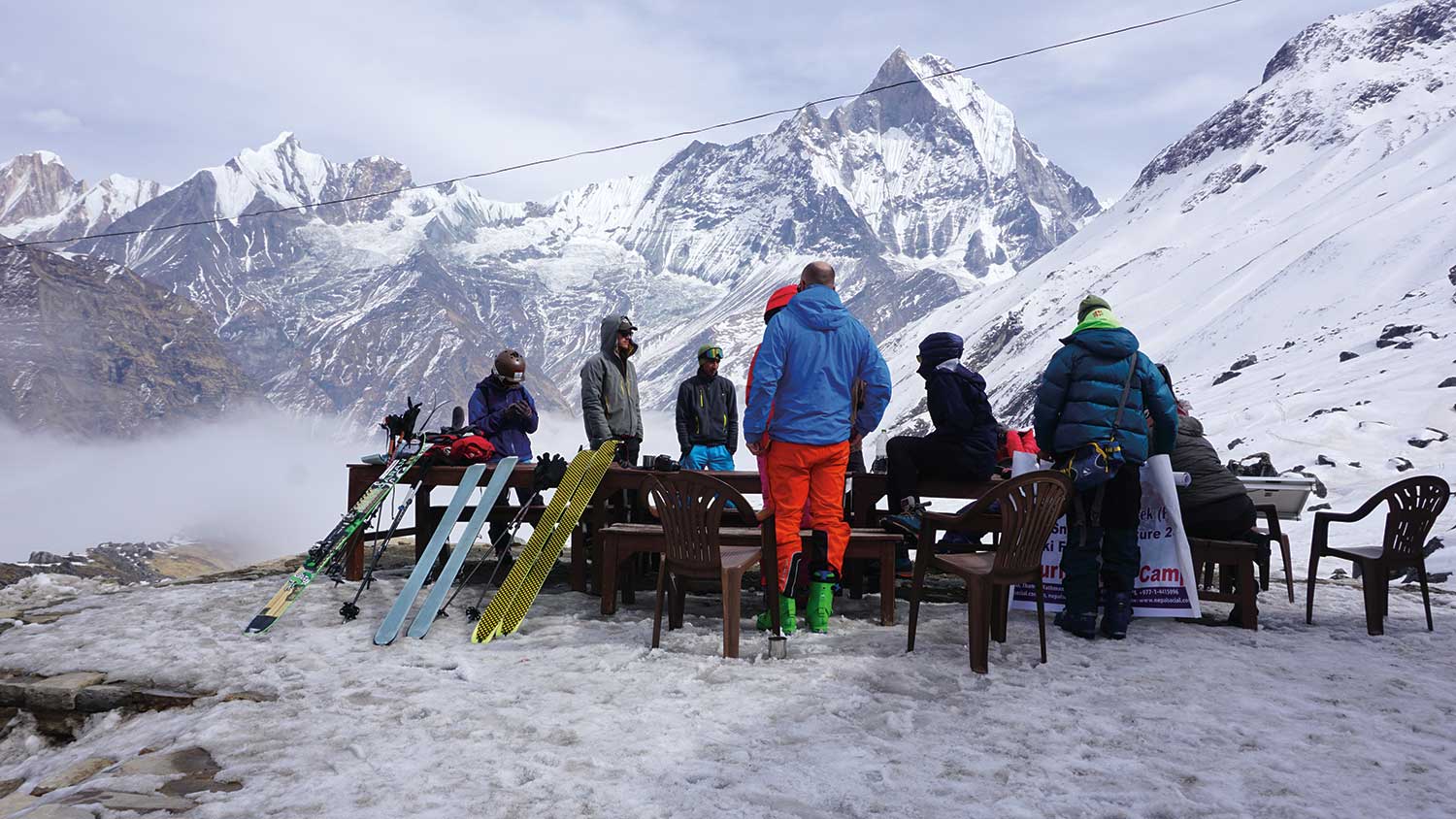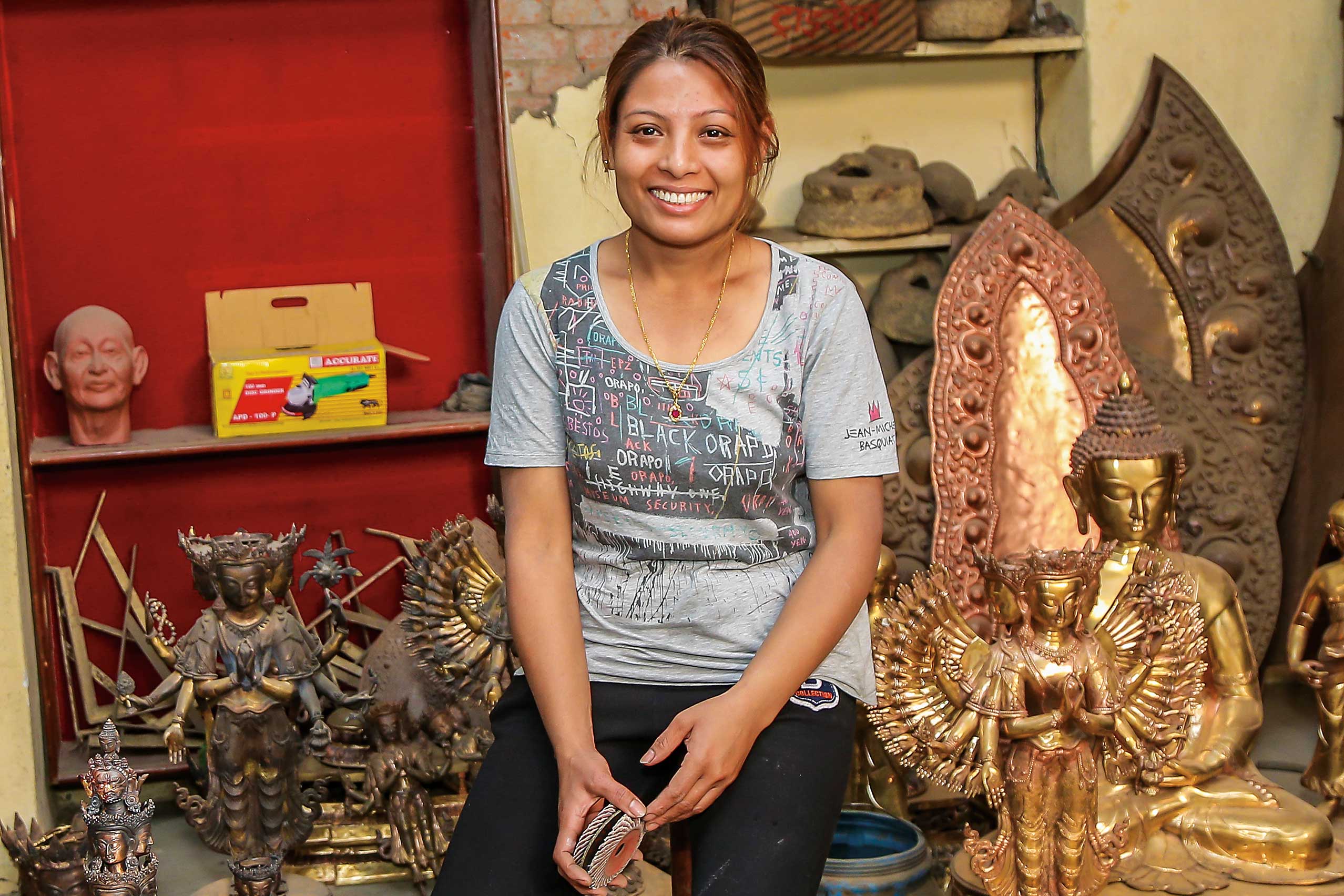Ability to move hands and legs freely is one of the most prized of gifts endowed on the human body. A visit to the newly opened facility for rehabilitating the spinally injured, sadly, reveals the precariousness of this gift of mobility. How a slight damage to the spinal cord can make us dependent on a wheelchair or crutches or, worse, bed ridden for life...
Car accidents, gunshot wounds, falls and certain diseases such as polio, spina bifida and Friedreich’s Ataxia, are frequent causes of spinal injuries. In Nepal, most patients are the victims of road accidents as well as construction and industrial accidents, and falls from cliffs or trees while collecting fodder. The cost of rehabilitating patients with spinal injuries is high, almost prohibitive to most Nepalese families. Fortunately, the newly opened Spinal Injury Rehabilitation Center (SIRC) near Banepa provides very low cost to virtually free treatment depending upon the financial circumstances of the victim. Though the majority of spinal injury victims in Nepal are poor, anyone can suffer from spinal injuries because none of us are immune from falls or accidents. It can happen at home, on the way to the office, or while having fun.
Four months ago Niswartha Shrestha, 23, like any youth of his age was planning his future; doing his Bachelor’s in Business Administration and a CA foundation course, hoping to become a chartered accountant. Today he is strapped from head to toe and bound to a wheelchair. The unexpected turn came in his life on the day of last holi (the festival of colors). He was drying clothes on the roof of the four story house where he lived when suddenly his neighbors started throwing lola (balloons filled with water). While dodging the balloons he fell off the roof. Niswartha lay on the ground unconscious for a few minutes. When he regained consciousness he realized that he was unable to move his hands.
“He was taken to Kathmandu Medical College for a day and then transferred to the teaching hospital where he was kept for ten days” says Namrata Shrestha, his sister, who has been taking personal care of him at the hospital. “After that he was kept in Dhulikhel Hospital for one and half months, and then finally transferred to the SIRC.”
“Doctors say his chance of recovery is 0.1 percent, meaning he will probably forever be dependent on a wheelchair for movement,” says Namrata. “That is because he suffered damage on the C5 vertebrae of the cervical in the neck. Had it been C4, it would have been very difficult for him to breathe.”
“Injuries above C-4 (i.e., C3, C2 and C1) may require a ventilator for the person to breathe. C-5 injuries often result in no control of the wrist or hand,” says Dr Thapa, a physiotherapist at the center. “Injuries of the cervical in the neck usually result in quadriplegia, a condition in which the patient cannot move either of his hands or legs.”
“Initially he was not even able to move his fingers, but now he can use his hands to grab and hold a few things,” says Namrata. “According to the physiotherapists, the improvement shown by my brother is a good sign and things could be much better in coming months.”
Rehabilitation Process
Patients brought to the Spinal Injury Rehabilitation Center are generally of two types: ones with complete injuries and the others with incomplete injuries. A complete injury means that there is no function below the level of the injury; no sensation and no voluntary movement. Both sides of the body are equally affected. An incomplete injury means that there is some functioning below the level of the injury. A person with an incomplete injury may be able to move one limb more than another and feel parts of the body that cannot be moved, or may have more functioning on one side of the body than the other. “Chances of recovery of those with complete injuries is only one percent,” says Dr Thapa. “Those with incomplete injuries can get back to normal; but, if they do not get proper treatment their condition can gradually deteriorate and get worse.”
Stage-Wise Treatment for Rehabilitation
The comprehensive rehabilitation process at SIRC is supported by well designed programs, qualified and trained staff and a sound facility. There are several steps in rehabilitation.
Stabilizing the patients
First, the patient has to be medically stabilized. He is put through all kinds of tests to check the normalcy of different physiological functions. His blood pressure has to be brought to normal. A patient who cannot move is kept on a tilt table, a specially designed bed to simulate assisted movements. Patients who have received modern treatments and then transferred to the center are kept on the table for about a week. Those who have undergone conventional treatment are kept for 42 days. Tilt tables are very expensive and the center has only two of these.
Physiotherapy
Since the patients lie on beds or sit in wheelchairs for long hours their bodies do not get proper exercise. This leads to freezing or weakening of the muscles. The fully equipped physiotherapy ward at the center allows proper exercise that can bring the strength and movements of the muscles back into shape.
Patients exercise daily under the supervision and support of trained physiotherapists. “Physiotherapy is a must for all kinds of patients, as it helps them with bed mobility, wheelchair skills, balance, strengthening, pain management, and gait training,” says Usha Thapa, a physiotherapist. The equipment in the physiotherapy ward includes a standing frame, parallel bars and a ladder where patients can learn to stand and gradually walk. A shoulder wheel and pulley fitted on the side walls improve the mobility of hands and shoulders, whereas a gym ball helps patients to balance the movements of their body. “There are large mirrors fitted all around so that patients can observe themselves while exercising and to balance and improvise their movements if they notice any flaw in their gaits,” says Usha. The ward also consists of modern gym equipment for patients who are athletes or the ones who use the gym regularly. An ultrasound machine helps through electronic massage to relieve pain in the body caused by the freezing of muscles in a particular area.
Occupational therapy
While muscular movements are associated with gross motor skills, the use of hands and legs for specialized activities like eating, dressing, opening and closing doors, holding a spoon, writing and typing, etc., are associated with fine motor skills. Physiotherapy helps to improve muscular movements, whereas occupational therapy trains the patients for activities of daily living. The occupational therapy ward is full of various things that patients can grab, hold and play with. They can learn how to use keys to lock and unlock doors, strap or unfasten velcro, carry and place things to the right place, type on a keyboard, and so forth.
Vocational training
As a part of its comprehensive rehabilitation program the center also provides trainings to patients that can help them find employment and be independent. “If somebody already has skills then they are trained in the same thing so that they can do what they were already doing,” says Dr Rajendra. “If somebody wants to acquire new skills then the center does its best to train them in the skill of their choice.”
Counseling
Most spinally injured patients continue to have a very active life, but lying on a bed or sitting in a wheelchair for prolonged hours can be very frustrating. After losing physical normalcy and in order to improve their condition it is very important that they retain psychological normalcy. Doctors at the center also provide psychological counseling to motivate their patients, but they say that peer counseling is most effective in boosting the morale of the patients. Peer counseling is done by people who have already gone through the experience and whose condition is improving. They can motivate the new patients and assure them that their situation, too, can improve with time and effort. Since a new patient needs other peoples’ support for everything and is virtually physically inert, he needs psychological support the most. Counseling is important at all stages of treatment. Peer counseling at the initial stage, psychological counseling during the treatment stage and psychosocial counseling when the patient is ready to reintegrate into the community and outside society all play important roles in rehabilitation.
Community integration and psychosocial training
In this last phase of the rehabilitation process the patients are trained to cope with different social situations. The behaviors of community members (derision, or simple looks of pity) can affect the psychology of recovering patients. The staff at the center visits the community (if it is in a nearby district) to help the family and community members modify their lifestyles to suit the needs of the patients. “We also visit the patients from nearby districts to follow up on the progress made by them,” says Dr Rajendra. “We cannot visit the far-flung districts, but if the hospitals or health posts there had proper staff and facilities we could coordinate for the care of a rehabilitated patient.”
The Way Ahead for the Spinally Injured
The Spinal Injury Rehabilitation Center is the only center in Nepal that is fully equipped and has such a well-rounded rehabilitation program. But complete rehabilitation can still be a far cry in a country like Nepal.
Take the case of Tapindra Pathak, a school teacher from Dolakha. He had no idea what lay ahead for him when he was travelling home with his son in a bus. The bus fell off the road and came to a crashing halt 200 feet down the roadside, after rolling over several times. Fear of the roller-coaster is yet to wane from his eyes, and the frustration that shows on his face speaks of the scare that lingers with Tapindra when he contemplates his future.
Four people were killed in that accident, and Tapindra’s son also suffered injuries but was discharged after some treatment. Tapindra, however, will have to depend on a wheelchair for mobility for the rest of his life.
Immediately after the accident he was lugged onto a truck and taken to the district hospital along with other victims. “I realized later that the way I was carried could have caused further damages. I was fortunate that a local doctor new that I had suffered a spinal injury and therefore he tied a neck brace that prevented further damage and cervical injury.”
Later, he was brought down from Dolakha to the Neuro Hospital in Bansbari, Kathmandu. There, it cost six hundred thousand (six lakh) rupees to operate on him. It was beyond his means to pay for the surgery, but the Arniko Bus Committee covered it. Then he was transferred to the SIRC and over the next five months he had to pay only one lakh more.
Tapindra used to teach at a school in Dolakha District. His village is three hours walk from the town and the village where he taught is a further one kilometer up the hill from his house. Doctors say that Tapindra has already shown great improvements and though he is going to need a wheelchair to move, he can still teach school.
For a few months during his recovery, however, Tapindra completely lost hope. But with improvements in his condition and because of the support and guidance of SIRC staff and other recovering patients he has shown confidence and a willingness to carry on. He says he can still teach some subjects, like Math, Serofero, Mero Desh, etc., to primary students as he has done in the past. The problem is that he comes from a village where there are only foot paths and no road suitable for wheelchair mobility. His only option is to relocate to a place and a school that has access to a road suitable for his wheelchair.
“But who will take me in as a teacher?” he asks.
As a low cost rehabilitation center, the Spinal Injury Rehabilitation Center seems to be fulfilling its commitment very well. But the answer to the question asked by Tapindra and many other spinally injured victims will have to be given by the society at large. g
Amendra Pokharel is a freelance writer who can be contacted at amendrapokharel@gmail.com. For more information on Nepal’s Spinal Injury Rehabilitation Center visit them on the Internet at www.sirc.org.np.

You Don't Have to Destroy Everything Around You to Make Something Beautiful
Throughout the years, Cotton Mill Nepal has transformed crisis into opportunity. The 16 hours of load shedding in...










